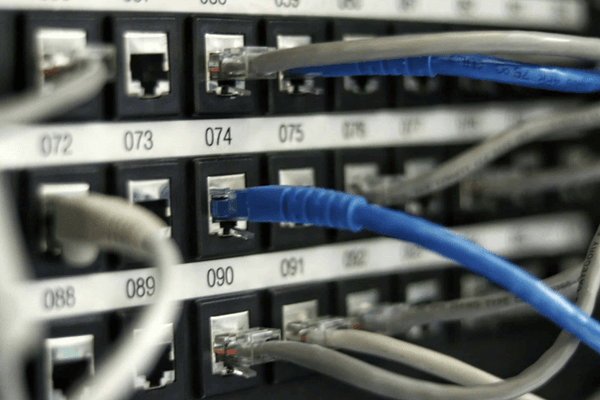
Share
Australia emerges as the world's second-largest data centre investment market with US$6.7 billion in 2024. Discover how Melbourne challenges Sydney's dominance
Australia has captured global attention by emerging as the world’s second-largest destination for data centre investment, attracting an unprecedented US$6.7 billion in capital during 2024. This remarkable achievement places the Australian data centre market ahead of traditional technology powerhouses and establishes it as a critical player in the rapidly evolving digital infrastructure landscape.
The surge in data centre Australia investment represents more than impressive statistics—it signals a fundamental shift in how global technology companies view the nation’s potential as a regional hub for data processing, storage, and artificial intelligence capabilities. With projections indicating the global data centre market will reach US$4 trillion by 2030, growing at an impressive 18% annually, Australia’s strategic positioning offers compelling advantages that extend far beyond its stable political environment and robust economy.
This investment boom coincides with Melbourne challenging Sydney’s traditional dominance as the nation’s primary data centre hub, driven by superior power availability and land resources. Meanwhile, sustainability requirements are reshaping facility design, with renewable energy integration becoming a critical factor in location decisions. The convergence of these trends creates unprecedented opportunities for the Australian data centre market to cement its position as the Asia-Pacific region’s premier digital infrastructure destination.
Australia’s global investment triumph
The magnitude of Australia’s achievement in attracting US$6.7 billion in data centre investment during 2024 becomes even more remarkable when measured against global competition. Only the United States, with US$14.6 billion in investment, exceeded Australia’s performance, while major technology markets including Singapore, Germany, and the United Kingdom trailed significantly behind this extraordinary data centre Australia success story.
This investment surge has positioned Australia to capture approximately 8.8% of total data centre investment across the Asia-Pacific region, making it the second-largest market after China. The Australian data centre market, valued at USD 4.5 billion in 2024, is projected to reach USD 7.8 billion by 2033, representing a compound annual growth rate of 5.7% that outpaces many developed markets worldwide.
Multiple strategic factors have fuelled this remarkable performance in the data centre Australia landscape. Australia’s exemption from export restrictions on advanced AI chips, including access to Nvidia’s latest processors, has created a strategic advantage that few other nations enjoy. This privileged access has made Australia one of only four nations in the Asia-Pacific region without constraints on high-performance computing equipment, attracting AI-focused investments that require cutting-edge hardware infrastructure.
The acquisition of AirTrunk, Australia’s largest independent data centre operator, by US-based Blackstone and the Canada Pension Plan Investment Board for a record-breaking sum exemplified international confidence in the Australian data centre market. This transaction, the largest data centre deal of 2024, demonstrated institutional investors’ recognition of Australia’s long-term growth potential and market stability across the region.
Australia’s geographical position offers unique advantages for serving both Asian and Pacific markets through its data centre infrastructure. The nation’s submarine cable connections provide low-latency access to major population centres across the region, while its timezone alignment with key Asian business hours facilitates real-time operations for multinational corporations seeking reliable data centre Australia solutions.
Investment momentum shows no signs of slowing, with major global cloud providers continuing to expand their Australian data centre footprint. The combination of political stability, reliable infrastructure, and strategic geographic positioning has created what industry analysts describe as a perfect storm of conditions favouring sustained data centre development across the continent.
Melbourne challenges Sydney’s dominance
Melbourne has emerged as the fastest-growing edge metro globally in a development that’s reshaping the entire Australian data centre market. According to Equinix’s analysis, the Victorian capital is experiencing an extraordinary 45% compound annual growth rate in interconnection bandwidth, projected to reach 102 terabits per second by 2026, up from 35 Tbps in 2023.
This explosive growth in Melbourne data centres represents a fundamental shift in Australia’s digital infrastructure geography. While Sydney maintains its position as the larger market with 647MW of built-out colocation capacity compared to Melbourne’s 218MW, the southern city’s growth trajectory suggests a future where the two markets may achieve near parity in the Australian data centre market landscape.
Melbourne’s colocation market, valued at $747 million in 2023, is projected to grow at a 17% five-year compound annual growth rate through 2028, slightly outpacing Sydney’s 16% growth rate. This trend reflects the increasing attractiveness of Melbourne data centres for major operators and enterprise customers seeking alternatives to Sydney’s constrained market conditions.
The driving force behind Melbourne’s ascendancy lies in its superior power availability and land resources compared to traditional data centre Australia locations. As Sydney faces increasing constraints in securing adequate electricity supply for large-scale data centre operations, Melbourne offers greater capacity at terminal stations and relatively affordable electricity rates that make it highly competitive for new developments.
This power advantage has attracted major developments to Melbourne’s western corridors, particularly in areas like Tullamarine, West Footscray, Deer Park, and Truganina. These locations combine flat terrain ideal for large-scale data centre construction with proximity to electricity infrastructure and transport networks that support efficient operations.
NextDC’s ambitious AUD 1.5 billion Melbourne facility represents the scale of investment flowing into the Victorian data centre market. This development, offering 150MW of power capacity, demonstrates the confidence major operators have in Melbourne data centres’ long-term potential to serve enterprise and hyperscale customers across the region.
Similarly, STACK Australia’s ongoing construction of a 72MW campus in Melbourne’s western suburbs reflects the substantial infrastructure investments reshaping the city’s data centre landscape. These projects highlight how Melbourne data centres are attracting investment that previously would have defaulted to Sydney locations.
Geographic advantages extending beyond power availability have positioned Melbourne for continued growth in the Australian data centre market. The city’s cooler climate reduces cooling requirements compared to warmer locations, improving operational efficiency and reducing energy costs for data centre operators seeking sustainable solutions.
Industry experts predict that Melbourne’s emergence as a major data centre hub will accelerate as more cloud providers establish local presence. Amazon Web Services’ establishment of the AWS Asia-Pacific Melbourne Region has created what operators describe as a full cloud market, eliminating the need for customers to route traffic through Sydney for cloud services access.
Power supply challenges and solutions
Power availability has emerged as the single most critical factor determining data centre location decisions across Australia, with adequate electricity supply representing both the greatest opportunity and the primary constraint for Australian data centre market growth. The nation’s current built-out data centre capacity of approximately 1.5 gigawatts is forecast to double within the next decade, but this expansion hinges entirely on securing reliable, high-capacity power connections.
Current power constraints
Sydney faces particular challenges where existing data centre concentration has strained available power infrastructure. Despite Sydney’s advantages as Australia’s largest metro market, power constraints are forcing operators to look beyond traditional locations or accept significantly higher connection costs that impact overall project viability.
The average cost of building a data centre in Australia now ranges between $9 to $10 per watt, representing a 4-5% year-on-year increase that places the market among the most expensive in the Asia-Pacific region. This cost pressure is driving operators to seek more efficient power solutions and alternative locations for their data centre Australia investments.
Emerging power solutions
Melbourne and Perth have emerged as increasingly attractive alternatives due to their available capacity at electricity terminal stations and competitive power pricing structures. Melbourne particularly benefits from access to Victoria’s renewable energy resources and grid infrastructure designed to accommodate industrial-scale power demands that modern data centres require.
Perth’s advantage lies in Western Australia’s gas reservation policy and substantial renewable energy developments, including the planned 50-gigawatt Western Green Energy Hub. These resources position Perth as an emerging location for sustainable data centre operations seeking cost-effective power solutions.
The power challenge extends beyond simple availability to encompass sustainability requirements that are reshaping the Australian data centre market. The Australian government has established a Power Usage Effectiveness target of 1.3 or less for data centre facilities, aligning with Environmental, Social, and Governance goals that major corporations increasingly prioritise in their location decisions.
This requirement has accelerated adoption of advanced cooling technologies and renewable energy integration across the data centre Australia industry. Facilities are implementing innovative solutions including liquid cooling systems, free air cooling, and on-site renewable generation to meet these stringent efficiency standards.
Submarine cable connectivity improvements are simultaneously addressing another critical infrastructure need for the Australian data centre market. The upcoming Hawaiki Nui cable, spanning over 15,500 miles and connecting Australia with the United States, New Zealand, and other Pacific nations, will provide enhanced international connectivity that supports Australia’s position as a regional data hub.
Regional markets including Brisbane, Adelaide, and Darwin are benefiting from the power constraints affecting major metros, offering available electricity capacity at competitive rates for data centre development. While these cities currently lack the ecosystem of connectivity providers that characterise mature markets, they represent emerging opportunities for specific use cases and customer requirements.
Hyperscale giants fuel the boom
Hyperscale cloud providers are driving the massive investment flowing into the Australian data centre market through unprecedented expansion commitments. Amazon Web Services’ announcement of a AU$20 billion investment over five years from 2025 to 2029 represents the largest publicly announced technology investment in Australian history, demonstrating the scale of commitment major providers are making to local data centre infrastructure.
Microsoft’s USD 3.4 billion expansion plan, designed to increase computing capacity by over 250% within two years, exemplifies the rapid scaling occurring across the data centre Australia industry. This investment includes plans for new data centre facilities in both Sydney and Melbourne, reflecting the geographic diversification strategy that major operators are pursuing to mitigate power and land availability risks.
The hyperscale expansion in the Australian data centre market is driven by several converging factors that show no signs of slowing. Enterprise adoption of cloud services continues accelerating, with Australian organisations increasingly migrating workloads to reduce infrastructure costs and improve scalability while accessing cutting-edge technologies.
Simultaneously, the artificial intelligence boom has created unprecedented demand for specialised computing infrastructure capable of supporting GPU-intensive workloads. These AI applications require significantly more power and cooling than traditional data centre operations, driving demand for next-generation facilities specifically designed for high-performance computing requirements.
Google Cloud, Oracle, and IBM have similarly expanded their Australian operations, creating what industry analysts describe as a full hyperscale market across both Sydney and Melbourne. This development eliminates the need for customers to route traffic interstate for cloud services access, reducing latency and improving performance for local applications across the data centre Australia ecosystem.
The enterprise market is simultaneously driving demand for Tier III standard facilities offering 99.98% uptime guarantees and redundant systems. These requirements reflect the mission-critical nature of many business applications and the growing intolerance for service disruptions that can cost organisations millions in lost productivity and revenue.
AirTrunk, NEXTDC, CDC Data Centres, and other major colocation providers are positioning themselves to capture both hyperscale and enterprise demand through large-scale facility development. The competitive dynamics between these operators are intensifying as each seeks to secure strategic land holdings and power agreements ahead of anticipated demand growth in the Australian data centre market.
Sustainability drives innovation
Environmental responsibility has evolved from an optional feature to a fundamental requirement driving data centre location and design decisions across Australia. The National Australian Built Environment Rating System has established rigorous standards, with a five-star rating requiring facilities to achieve a Power Usage Effectiveness of 1.34 or below, pushing operators toward innovative efficiency improvements throughout the data centre Australia sector.
NextDC’s M1 Melbourne facility achieved recognition as Australia’s first NABERS 5-star rated data centre infrastructure facility, demonstrating that world-class environmental performance is achievable in the Australian market. The facility’s PUE rating of 1.3, combined with sustainable free air-side cooling and a 400kW solar PV rooftop array, illustrates the integrated approach required to meet stringent environmental standards.
The Australian government’s commitment to environmental accountability extends beyond NABERS ratings to encompass comprehensive reporting under the National Greenhouse and Energy Reporting Act. Data centres must now provide bi-annual sustainability metrics including PUE, Water Usage Effectiveness, and renewable energy sourcing percentages, creating transparency that enables informed decision-making by environmentally conscious customers.
Renewable energy integration has become a critical competitive differentiator in the Australian data centre market, with major operators pursuing power purchase agreements and on-site generation to meet sustainability commitments. Amazon’s investment in three new solar farms across Victoria and Queensland, delivering over 170 megawatts of combined capacity, exemplifies the scale of renewable energy procurement occurring alongside data centre development.
Advanced cooling technologies are revolutionising facility design across data centre Australia operations. Liquid cooling systems, previously rare in the Australian market, are becoming standard for high-density AI workloads that generate substantially more heat than traditional computing equipment. Free air cooling systems take advantage of Australia’s climate conditions to reduce mechanical cooling requirements, particularly during cooler months.
Perth and the Northern Territory are emerging as centres for green data centre development, leveraging abundant renewable energy resources and competitive power costs that support sustainable operations. Western Australia’s gas reservation policy and substantial wind and solar potential create conditions favourable for carbon-neutral data centre operations, while the Northern Territory’s solar resources support large-scale renewable energy projects.
The sustainability trend extends beyond operational aspects to encompass facility construction and end-of-life management across the Australian data centre market. Data centre operators are increasingly focused on embodied carbon in building materials, waste reduction during construction, and responsible disposal of IT equipment at end-of-life, reflecting comprehensive environmental approaches that support long-term business success.
Regional expansion and future opportunities
The Australian data centre market is increasingly extending beyond traditional Sydney and Melbourne locations, with regional cities and alternative areas emerging as viable options for specific use cases and customer requirements. This geographic diversification reflects both the maturation of the data centre Australia industry and the practical constraints affecting primary metropolitan areas.
Perth has attracted particular attention due to Western Australia’s abundant renewable energy resources and competitive electricity costs that make it attractive for sustainable data centre development. The state’s gas reservation policy guarantees reliable, affordable power for large-scale industrial users, while substantial wind and solar developments provide pathways to carbon-neutral operations that align with corporate sustainability goals.
The Northern Territory represents another emerging opportunity in the Australian data centre market, particularly for operators seeking to capitalise on submarine cable connections to Asian markets. Darwin’s strategic position provides low-latency connectivity to Southeast Asian population centres, while the territory’s solar resources support renewable energy integration for environmentally responsible operations.
Adelaide, Brisbane, and Canberra are similarly benefiting from the overflow effects of capacity constraints in major metros, offering available power connections, competitive land costs, and growing local enterprise markets that can support data centre development. The emergence of edge computing applications requiring local processing capabilities further supports regional market development across Australia.
The Asia-Pacific region’s projected addition of 4,174 megawatts of data centre capacity by 2027, supported by over US$58.7 billion in planned investments over the next two years, provides context for Australia’s growth within broader regional trends. Australia’s substantial land resources and renewable energy potential position it to capture a significant share of this regional expansion through strategic data centre Australia developments.
Edge computing growth represents a particular opportunity for regional data centre development across Australia. The deployment of 5G networks creates demand for edge infrastructure that processes data locally, reducing latency for applications like autonomous vehicles, smart city systems, and industrial automation while supporting the broader data centre Australia ecosystem.
Government support through tax incentives, planning facilitation, and skills development programs enhances the attractiveness of regional expansion for data centre operators. The National Australian Built Environment Rating System’s data centre starter program, offering financial contributions up to AUD 8,000 for energy efficiency improvements, demonstrates policy support for sustainable industry growth across all locations.
Skills development initiatives, including Amazon Web Services’ Data Center Academy partnership with TAFE NSW, address workforce development needs that are particularly acute in regional areas. These programs help Australia develop the technical expertise required to support continued expansion of the data centre Australia industry beyond traditional technology centres.
Market challenges and strategic responses
Despite Australia’s remarkable success in attracting data centre investment, several significant challenges require coordinated responses from industry and government stakeholders to maintain growth momentum. Land scarcity in prime locations represents the most immediate challenge, particularly in Sydney where suitable sites with adequate power connections and proximity to network infrastructure are increasingly difficult to secure for new data centre Australia projects.
The average land absorption by data centres has grown substantially in recent years, driven by AI workload requirements that demand larger facilities with higher power densities than traditional computing operations. This trend intensifies competition for suitable sites and drives up acquisition costs, potentially constraining future development in established markets.
Skills shortages represent another critical constraint that could limit Australian data centre market growth despite strong investment interest. The rapid expansion of data centre capacity has created demand for specialised technical roles including facility managers, network engineers, and cybersecurity professionals who understand the unique requirements of modern digital infrastructure operations.
Regional expansion compounds the skills challenge by distributing demand across locations that may lack established technical education programs or career pathways in data centre operations. Addressing this challenge requires coordinated investment in education and training programs that can support industry growth across diverse geographic markets.
Grid stability and power infrastructure modernisation requirements extend beyond simple capacity additions to encompass fundamental changes in how Australia’s electricity system operates. The Australian Energy Market Operator’s concerns about power distortion and potential cascading failures highlight the need for coordinated planning between data centre operators and energy infrastructure providers.
Environmental compliance requirements, while driving positive sustainability outcomes, also create complexity and cost pressures that smaller operators may struggle to address effectively. The five-star NABERS rating requirement for government customers, expanding to all federal agency workloads from July 2025, establishes high performance standards that require significant investment in efficient technologies and renewable energy sourcing.
Competition from other Asia-Pacific markets adds external pressure to Australia’s growth trajectory in the global data centre industry. Singapore, despite land and power constraints, remains a preferred location for many operators due to its established ecosystem and connectivity advantages, while emerging locations like Jakarta and Mumbai provide cost advantages that may attract price-sensitive customers.
Successfully navigating these challenges requires proactive collaboration between government, industry, and educational institutions to address infrastructure, skills, and regulatory requirements that support continued data centre Australia growth while maintaining competitiveness in the global market.
Strategic outlook for Australia’s data centre future
Australia’s emergence as the world’s second-largest data centre investment destination represents more than a statistical achievement—it demonstrates fundamental strengths that position the nation for sustained leadership in the global digital infrastructure sector. The convergence of strategic geographic positioning, renewable energy resources, regulatory stability, and market access creates conditions that few competing locations can match in the evolving data centre industry.
Melbourne’s challenge to Sydney’s traditional dominance illustrates the dynamic nature of the Australian data centre market, where power availability and sustainability requirements increasingly outweigh historical advantages. This geographic rebalancing suggests a future where multiple Australian cities contribute to the nation’s data centre capacity, reducing concentration risks while expanding opportunities for investment and innovation.
The projected trajectory toward a US$15.51 billion investment pipeline across the Asia-Pacific region positions Australia to capture significant value from continued digital transformation trends. Artificial intelligence adoption, cloud migration, and edge computing requirements will drive sustained demand for data centre Australia infrastructure, while the nation’s strategic advantages maintain continued competitiveness in attracting global investment.
For businesses evaluating data centre strategies, Australia offers compelling advantages including political stability, renewable energy access, and proximity to Asian markets that support both domestic and regional operations. Government agencies can leverage Australia’s growing data centre Australia capabilities to support digital transformation initiatives while meeting sovereignty and security requirements.
Data centre operators have opportunities to capitalise on Melbourne’s emergence, regional market development, and sustainability innovation that differentiates Australian facilities in the global market. Educational institutions and workforce development programs can contribute by developing the skilled professionals required to support continued industry growth across diverse geographic markets.
Success in capitalising on these opportunities requires coordinated action across multiple stakeholders to address infrastructure planning, skills development, and regulatory frameworks that balance innovation support with appropriate oversight. The data centre Australia industry’s transformation from a regional market to a global destination demonstrates the potential for strategic infrastructure investment to drive economic growth and technological leadership.
As artificial intelligence, quantum computing, and other emerging technologies reshape digital infrastructure requirements, Australia’s combination of natural advantages and policy support positions it to remain at the forefront of global data centre development. With proper planning and execution, the Australian data centre market can continue its remarkable growth trajectory while delivering sustainable, innovative infrastructure that serves both local and international customers across the expanding digital economy.
Further questions
Why has Australia become the world's second-largest data centre investment market?
How is Melbourne challenging Sydney's position as Australia's primary data centre hub?
What role does power supply play in Australia's data centre development?
Which major technology companies are investing in Australian data centres and why?
How important is sustainability in Australia's data centre industry?
This is general information only and is subject to change at any given time. Your complete financial situation will need to be assessed before acceptance of any proposal or product.





